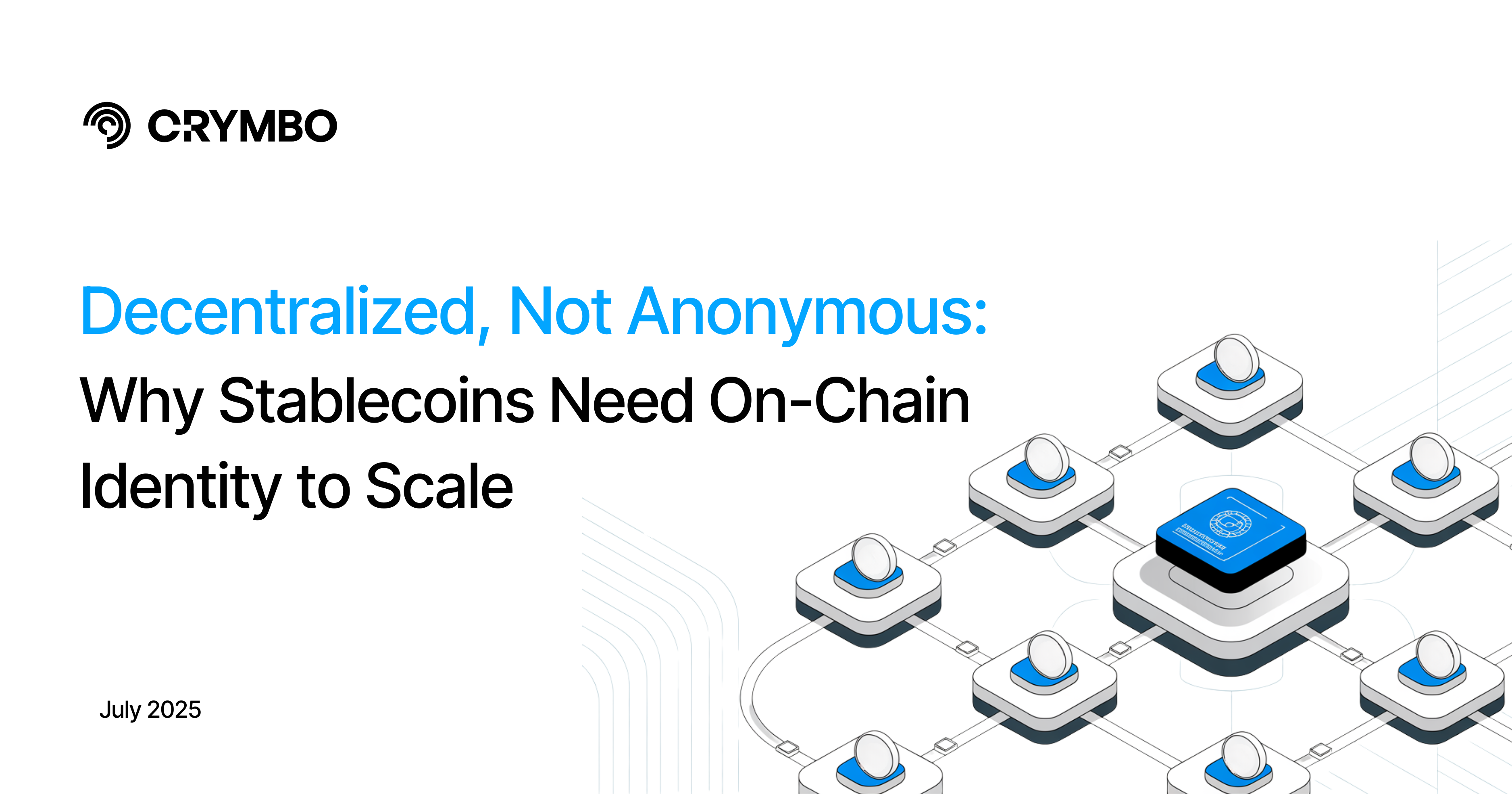By Eyal Daskal, CEO of CRYMBO | July 2025
The Problem Everyone Feels — But No One Has Solved
Stablecoins have the potential to move money instantly, across borders, 24/7, without intermediaries. But when financial institutions, fintechs, or regulators get involved, one question always comes up:
How can you trust a transaction if you don’t know who’s on the other side?
On blockchain, there are no account numbers or names — just wallet addresses. These could belong to anyone: an individual, a company, or even a smart contract.
So, how can a regulated entity send or receive stablecoins without violating compliance rules — and without giving up decentralization?
Why Current Solutions Fall Short
Most compliance today happens off-chain — through centralized APIs, pre-approved counterparty lists, or manual verification systems.
These methods assume:
- Known participants
- Centralized control
- Pre-built integrations
But real blockchain systems don’t work like that:
- Wallets are anonymous and dynamic
- Funds move between chains and apps instantly
- Counterparties are often unknown in advance
This leads to slow, expensive, and fragile compliance — and forces many institutions to avoid the space altogether.
The Solution: Bring Identity On-Chain
To scale stablecoins, especially in regulated environments, identity must be embedded directly into the blockchain layer.
That’s why we built CRYMBO — an infrastructure layer that enables encrypted, verifiable identity and regulatory metadata to be exchanged on-chain, as part of the transaction itself.
How It Works — In Plain Terms
Let’s say a user sends $100 in stablecoins.
In parallel, CRYMBO processes two on-chain metadata transactions:
- One transfers encrypted identity context (e.g., jurisdiction, license type, risk profile)
- One validates that the receiver meets the sender’s compliance policy
The receiving party can pull and decrypt the metadata using their private key.
If validation fails (e.g., the recipient is sanctioned), a smart contract can automatically block or flag the transfer.
It’s real-time, verifiable, and doesn’t rely on trust — just code and cryptography.
Why It Matters
- Institutions can meet regulatory standards without centralizing infrastructure
- Developers can build dApps that serve enterprise users
- Regulators get visibility into flows, without needing direct control
- Users retain privacy, self-custody, and interoperability
Put simply, CRYMBO bridges the gap between compliance and decentralization.
Who It’s For
- Stablecoin Issuers preparing for long-term regulatory readiness
- Banks & Fintechs launching crypto rails and tokenized assets
- DeFi Protocols connecting to regulated liquidity
- Layer 1 & Layer 2 Networks offering identity-aware infrastructure
- RWA Platforms need on-chain compliance without centralization
- Wallets & DApps serving institutional clients and enterprise-grade flows
The Path Forward
The real bottleneck for stablecoins isn’t scalability — it’s compliance.
And we won’t fix it by forcing centralization back into the system.
CRYMBO offers a new approach:
- Identity that lives with the asset
- Compliance is built into the transaction
- Privacy is preserved by default
If money is moving on-chain, identity needs to move with it.
To partner, integrate, or request sandbox access:
Eyal Daskal | CEO, CRYMBO eyal@crymbo.com | www.crymbo.com

